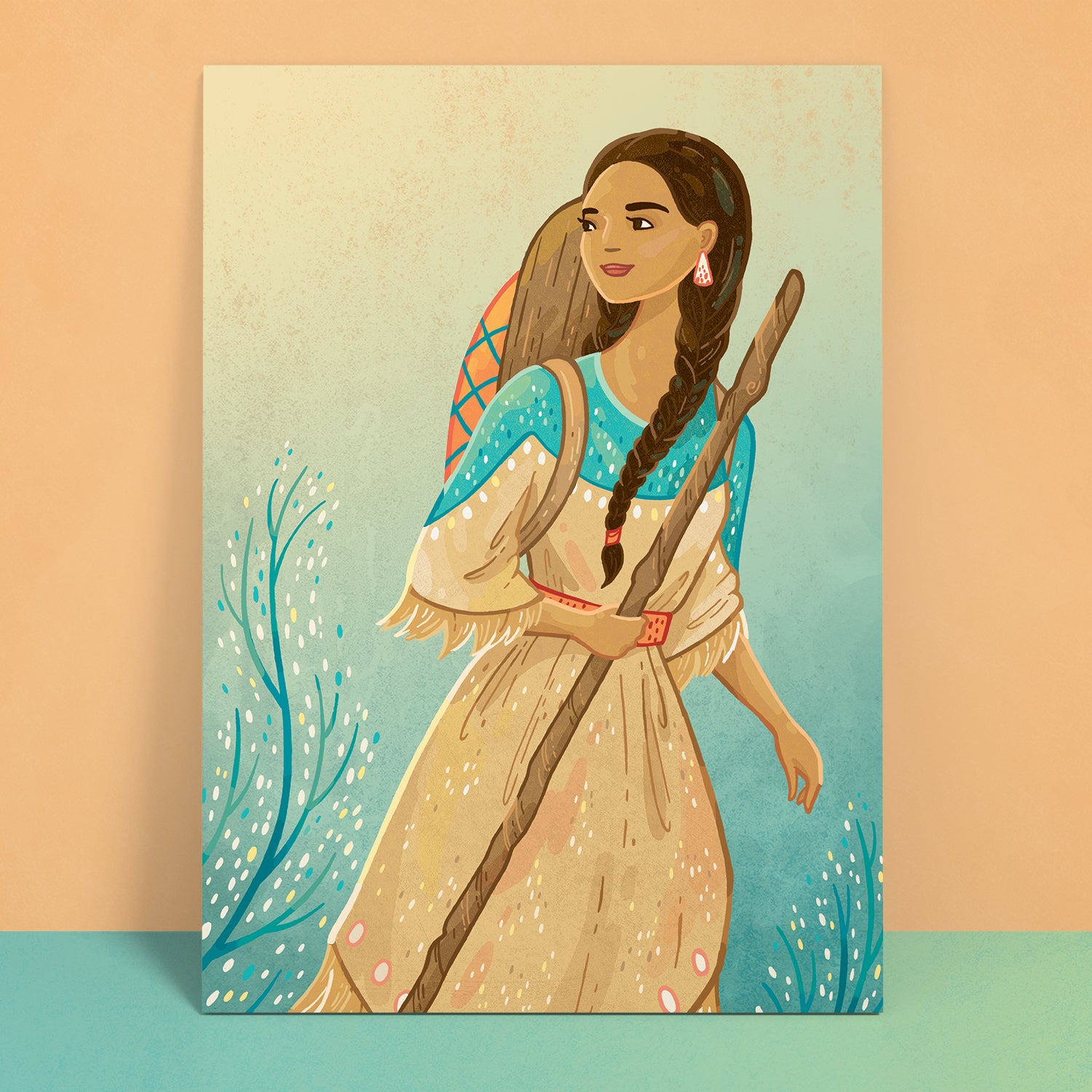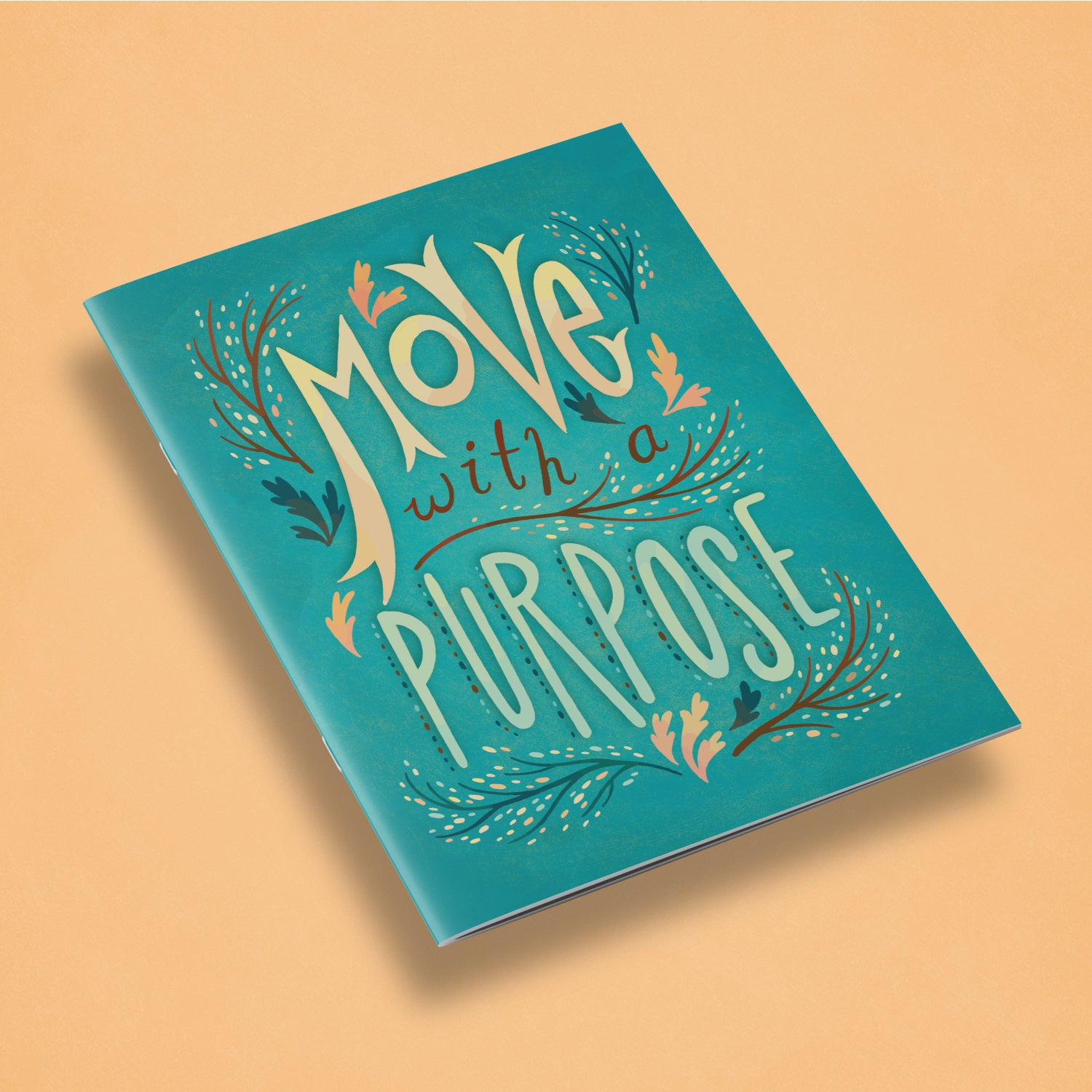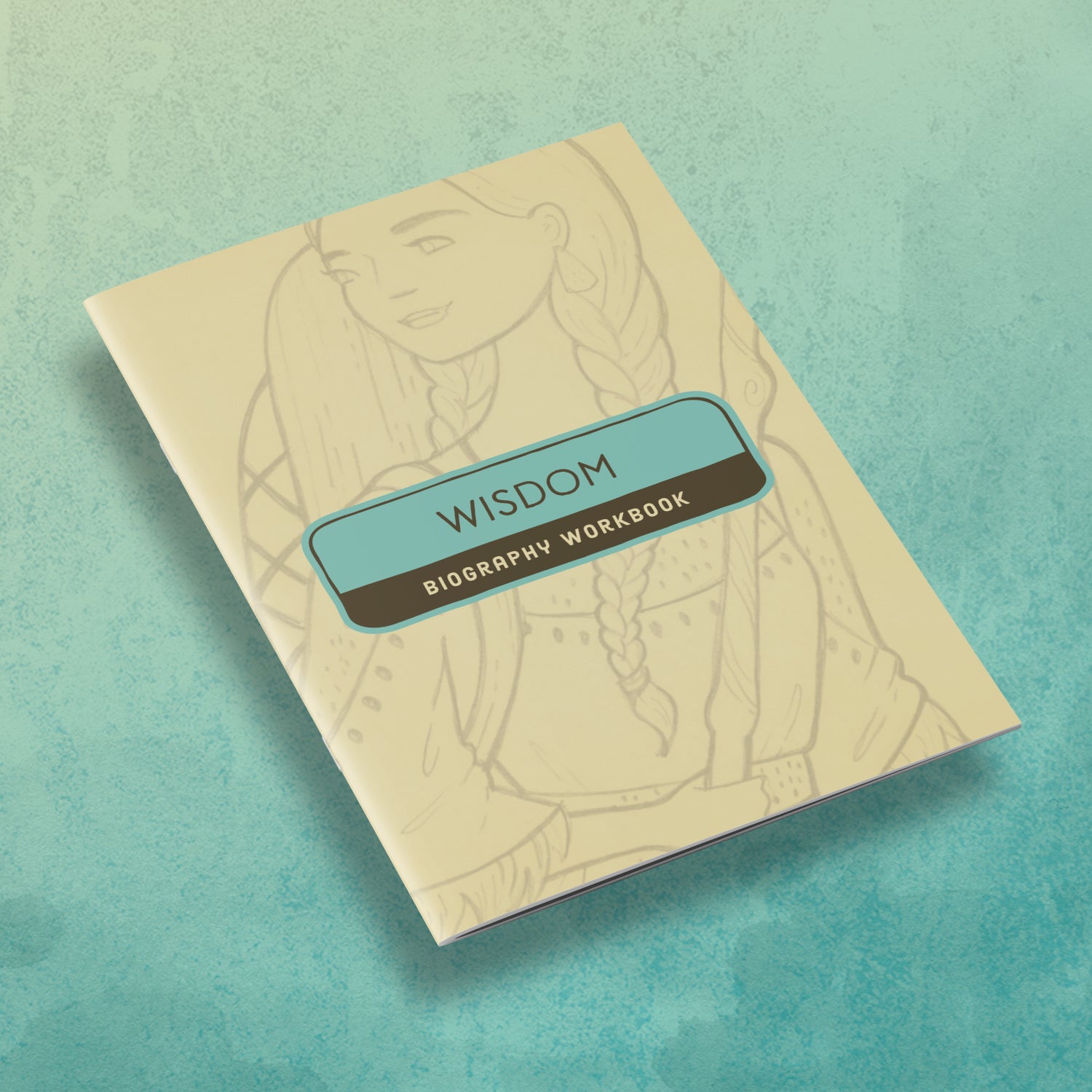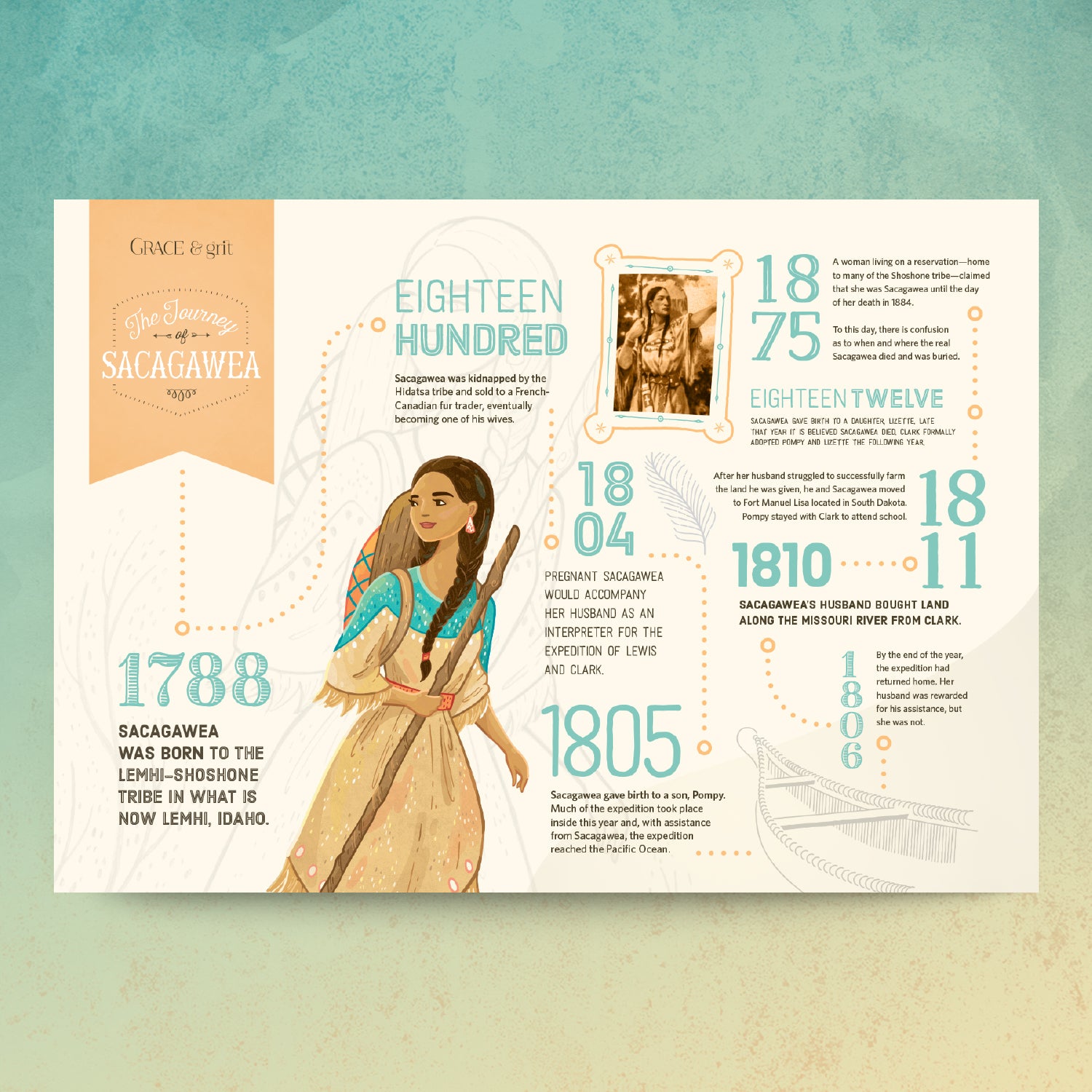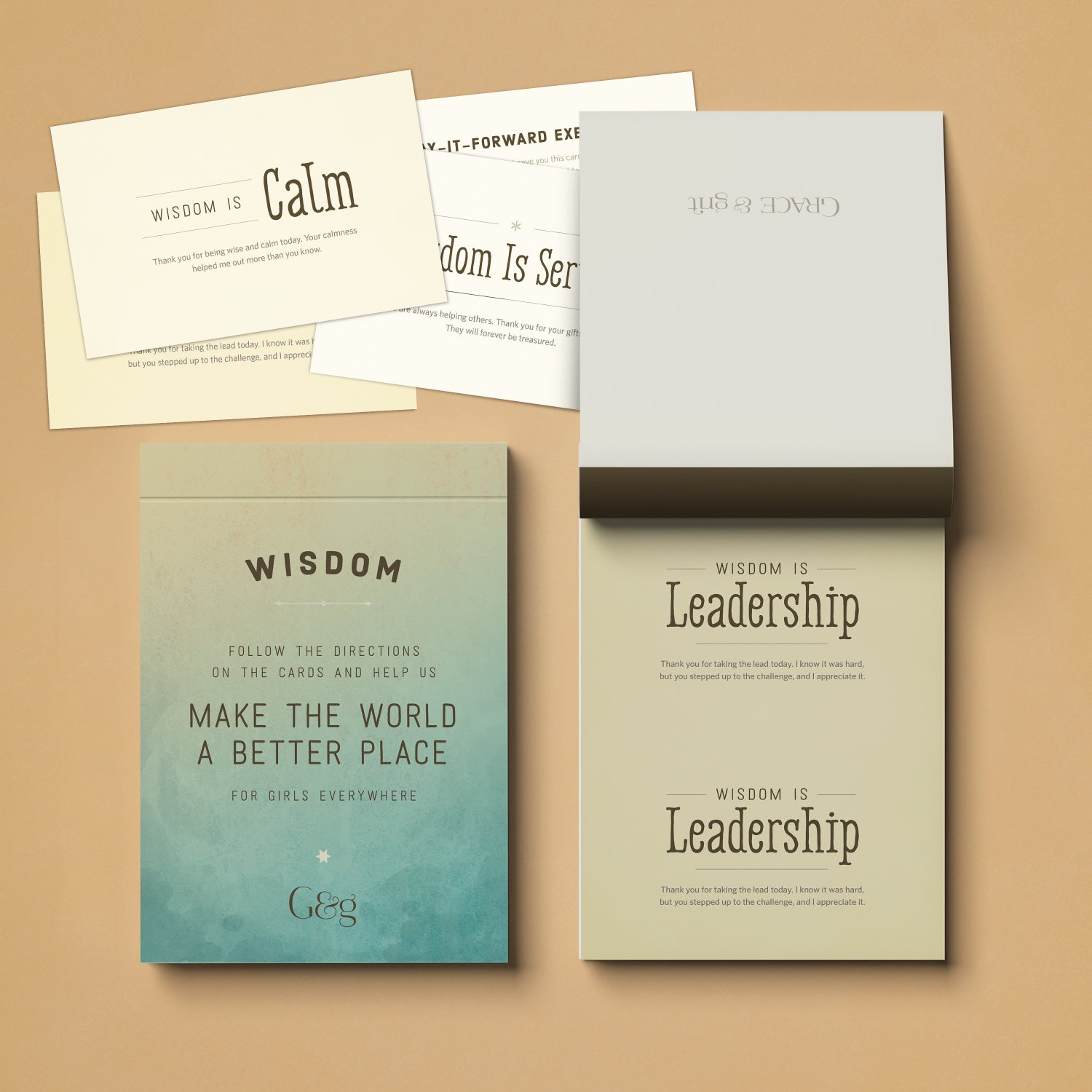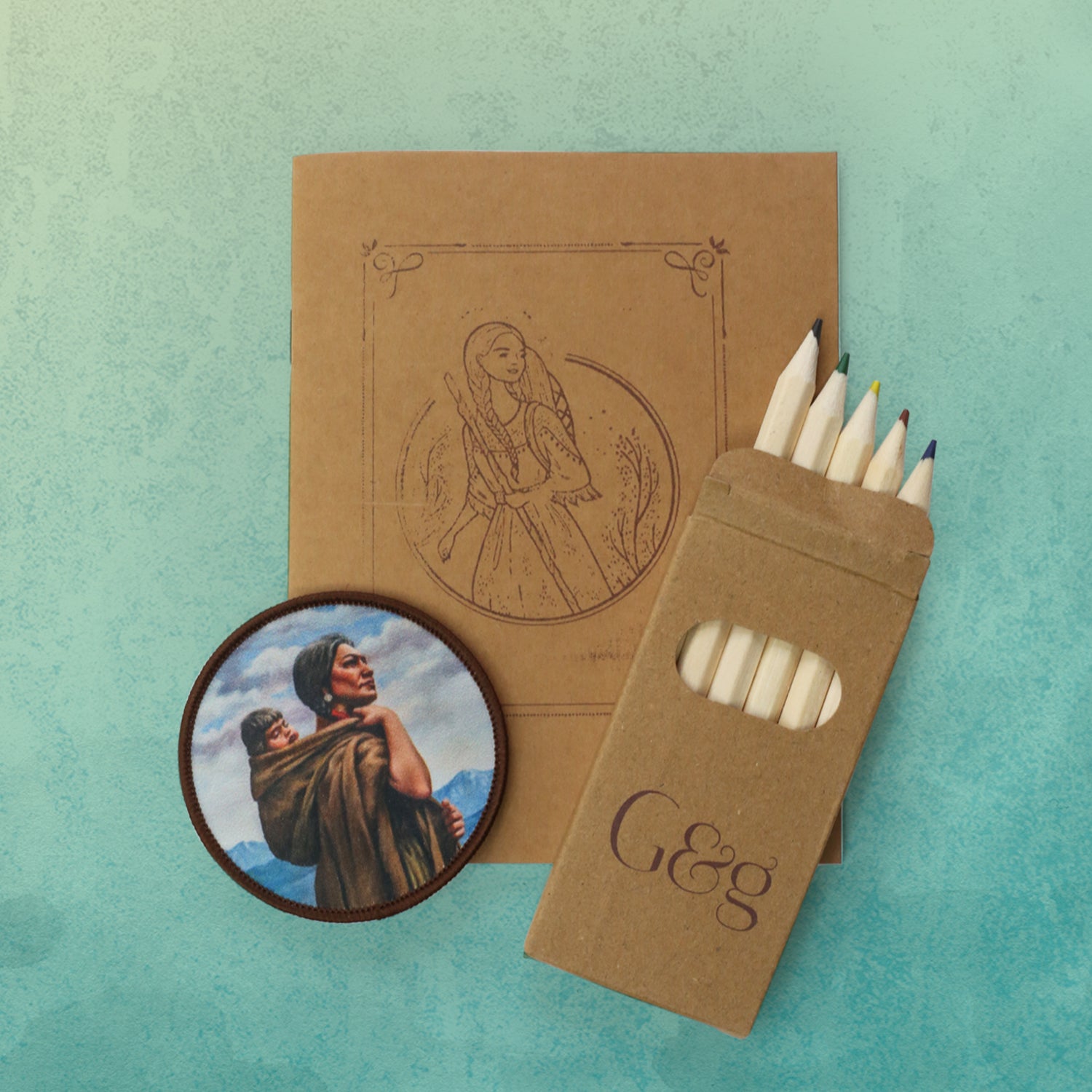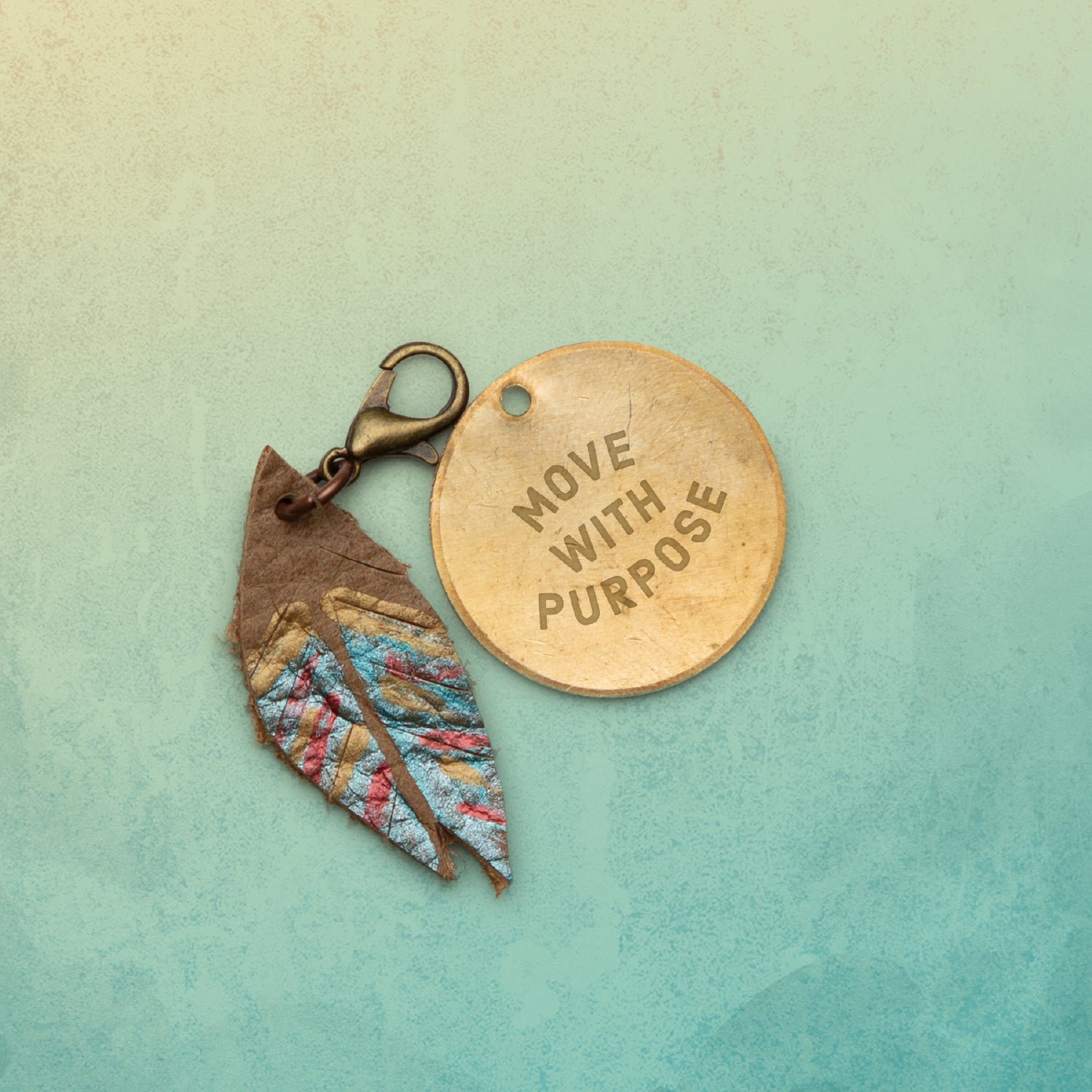Wisdom is the action taken from a combination of knowing what is true or right with just judgment. Being wise requires processing thoughts and situations before acting. This lesson gives a real-life example of a woman who decided to honor her values and beliefs. It helps girls understand the importance of wisdom and how to incorporate the character trait into their lives and relationships.
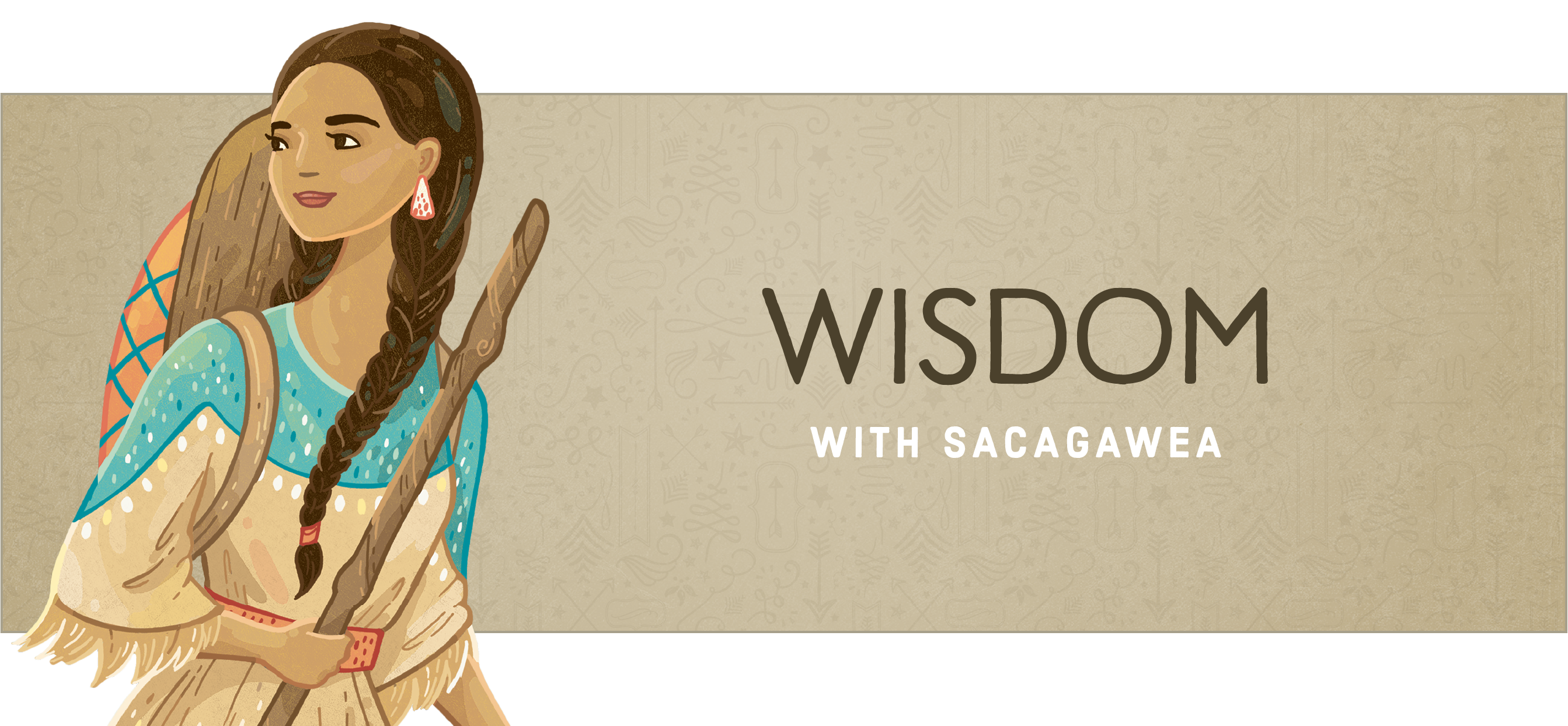
Section One
Preparatory Reading
INTRODUCTION FROM HEATHER STARK: WHY SACAGAWEA?
Sometimes I think teenagers get a bad rap. Most of the time, they bring it on themselves, but there are times that we—as parents and teachers—need to step back and evaluate the situation.We need to realize that the teens we are trying to teach responsibility and wisdom are already showing signs of those traits. Granted, there are times I look at my daughter, and I think, “Dear God in Heaven, why do you hate me?” But the older she gets, I have noticed there are even more moments when I look at my daughter and think, “Dear God in Heaven, you love me; you really do love me!”
Teenagers can be hard. Like, rock hard. One cannot foresee the action that turns a fleeting moment of hugs and smiles into an arsenal of eye-rolls and attitude. But, really, teenage girls are pretty awesome, and it is important that they understand their awesomeness NOW. We need them to understand that they don’t have to wait for adulthood to use this power. Sometimes, I missed this point with my daughter. I spend a lot of time talking about how, when she is an adult, she needs to be wise, a leader and a problem-solver, but I need to start telling her I already see her wisdom, leadership and problem-solving skills. She impresses me, and it is vital she keeps growing these skills. It is vital for all our girls.
Studying the life and spirit of Sacagawea helped me realize how much our girls need to know we already see greatness in them.
As a teenager, Sacagawea taught Lewis and Clark about the benefits of nature: which plants were edible and which ones should be used for medicinal purposes. She was able to navigate through the wilderness and pick out landmarks to mark their journey through the Louisiana Purchase. This teenager was a natural teacher.
A Native American principle that Sacagawea lived by was to help people in need. Whether Sacagawea truly wanted to lead Lewis and Clark or simply felt compelled to help because of this principle, the fact remains she agreed and carried the responsibility through—a lesson most teenagers struggle to comprehend.
Lewis and Clark wrote in their notes how Sacagawea painted red lines on her face as a sign of peace for other tribes to see. Eventually, the men did this as well, which shows how much of a role model she was for the expedition. She would find a safe campsite for the men, get them settled and then go and gather food. She was concerned about the men and looked out for their safety.
This teenager had to remain calm and, most likely, patient with the men and their naivete in handling the new experiences around them. I admit, I do laugh at the thoughts I imagine Sacagawea may have had as she led Lewis and Clark—perhaps a little frustration at their slowness and their ignorance. I wonder if they ever tried to argue with her about her knowledge of the land and if she just quietly let them talk until they came full circle and proved themselves wrong. In my head, she had some pretty descriptive words for the men she was leading. However, Lewis and Clark never made mention of any frustration with Sacagawea during their two years together. Teenagers often have trouble understanding the value of remaining calm with people—using grace and thinking about the bigger picture—but I think she knew relationships had to be preserved for everyone to survive on the trip.
The one thing that really impressed me about teenage Sacagawea was that, at the end of nearly two years and some 3,700 miles, the group had finally reached the ocean. However, Lewis and Clark were not going to let her go with them as they made their way to see it; they invited her husband, but not her. This did not sit well with her, and she spoke her mind. Lewis and Clark wrote in their journals that she made it clear that she should be able to see the “big water,” as she had walked just as long and worked just as hard as they did. Lewis and Clark relented and “let” her come along. There is so much content here to discuss and dissect, but I am going to stay with the fact that a 16-year-old looked three grown men in the eye, spoke her mind and they listened.
In applauding the amazing qualities of Sacagawea, I am not necessarily pushing for our young people to take off on an expedition across nature’s frontier—but they should know it is within their abilities to do so. We should let them know they are capable of some amazing things right now. These things do not have to be huge, world-changing actions: They can stay within the community and make an impact by helping fellow students who have a disability, helping at the local food bank, volunteering to help a Girl Scout troop or assisting at a pet shelter. They also have the right to speak up when they have invested time, energy and knowledge into a project or activity.
Any girl who feels she has received an unfair grade on a school assignment should be able to responsibly discuss it with her teacher or believe it is within her rights to discuss a bad call she feels her coach made on the basketball court. Encouraging our daughters and our students to do these things are leadership and growth opportunities. Recognizing that they already do these things reaffirms they are on the path to a successful life. These things expand their spirits and not only require confidence, but grow confidence.
Sacagawea’s story sheds light on so many natural lessons for a young girl to learn in her lifetime, and she garnered all of this wisdom in her childhood. Sacagawea’s spirit also leaves a lesson for all of us who are trying to expand young minds to appreciate all the ways in which the girls of today are already wise, responsible leaders.
THE JOURNEY OF SACAGAWEA’S LIFE
On paper, Sacagawea’s life was not her own. Not one historical detail suggests she led a life that she was able to fully control. She seemed to be pulled in all directions, but made the best of her circumstances. In examining the years of her life and learning how Lewis and Clark endeared themselves to her, it appears her sacrifices did not go unnoticed.
1788/1789
Sacagawea was born to the Lemhi-Shoshone tribe in what is now Lemhi, Idaho.
1800
Sacagawea was kidnapped by the Hidatsa Tribe and sold to a French-
Canadian fur trader, eventually becoming one of his wives.
1804
Sacagawea met Lewis and Clark.
1805
Sacagawea gave birth to her son, Pompy. Much of the expedition took place during this year, and with assistance from Sacagawea, the expedition reached the Pacific Ocean.
1806
By the end of the year, the expedition had returned home. Her husband was rewarded for his assistance, but she was not.
1809
Sacagawea and her husband moved to land given to them by Clark.
1811
After her husband struggled to successfully farm the land he was given, he and Sacagawea moved to Fort Manuel Lisa, located in South Dakota. Pompy stayed with Clark to attend school.
1812
Sacagawea gave birth to a daughter, Lizette. Later that year, it is believed Sacagawea died. Clark formally adopted Pompy and Lizette the following year.
1875
A woman living on a reservation—home to many of the Shoshone Tribe—claimed that she was Sacagawea until the day of her death in 1884. To this day, there is confusion as to when and where the real Sacagawea died and was buried.
CHARACTER TRAIT: WISDOM
Wisdom carries a strong, selfless, beautiful power. Many teenagers and young adults chase these ideas of being a great leader—being authentic, creative, smart, calm, generous, funny, happy, successful—and, really, all these qualities are embodied in the single character trait of wisdom. Life seems like it would be much easier if everyone pursued the idea of being wise.
Take a moment to think about people whom you would consider wise. These people see the bigger picture, love freely and appreciate life. They are optimistic, hard-working, truth-telling, truth-seeking, understanding, open-minded individuals, imbued with an understanding that life is full of paradoxes: clarity and order, confusion and chaos.
Wisdom strengthens, builds and opens minds. The absence of wisdom leads to weakness, a breeding ground for anxiety and fear. This is the place where teams fall apart, arrogance is revealed and false leaders prevail. A wise person fills a room with quiet strength. The arrogant person barges into a room and strips it of dignity. Arrogance is selfish; wisdom is selfless.
Think about some of the great leaders in history. They put aside their needs for the sake of the greater good. Harriet Tubman risked getting caught every time she led a group of slaves to freedom; knowing when to move on the trail and when to hide took wisdom. Gandhi did not eat in an effort to bring unity and freedom to India; his wisdom helped him decide how to address the needs of India to the British government. Anne Sullivan devoted her life to Helen Keller; her wisdom helped her teach Helen how to communicate and provided guidance for other teachers working with the visually impaired population. Martin Luther King Jr. was imprisoned and eventually gave his life for equality between the races; his wise words are still used today.
Wisdom comes from deep personal growth and struggle; it takes time to cultivate and a conscious effort for it to infuse one’s spirit. It requires a willingness to be vulnerable and to connect with others to start bridging the gap between differing viewpoints. And making that decision to value others and attempting to understand their situations is an important step in building wisdom and a better future for everyone.
LESSON CONTENTS
Below are descriptions of each item we offer as part of the Wisdom Theme. Depending on your purchase, some of these may not be applicable.
- Illustrated Portrait
- Our portrait gives life to each of our sets. Sacagawea's illustration depicts the teen guide, her son strapped to her back, turning to look behind her, checking on the men she was leading through the wilderness. She is calm, almost serene, with just the hint of a smile or smirk on her face. Either way, she is peaceful and secure at the head of the line.
- Activity Booklet
- The Activity Booklet highlights the themes in Sacagawea's life. It gives an overview of her journey into wisdom and the legacy she left behind. The booklet includes six thought-provoking activities that guide the readers to apply the lessons of Sacagawea's life to their own. Girls will understand what wisdom looks, sounds and feels like. More importantly, they will understand how to be their own best advocate.
- Biography
- While the Activity Booklet highlights Sacagawea's story, the Biography gives a more in-depth telling of her life. The reader will learn how Sacagawea was kidnapped as a child only to become the teenage hero of a famous expedition. It also pays a small tribute to the 20th-century woman who discovered Sacagawea's story and shared it with the world. The Biography includes quotes from Clark's journal illustrating Sacagawea's innate wisdom.
- Biography Workbook
- The Biography Workbook allows the reader to dive into the lessons Sacagawea's legacy teaches and apply them to their life. We took the same thought-provoking activities from the Activity Booklet and made them into a companion guide for the Biography. After completing the activities, girls will understand what wisdom looks, sounds and feels like. More importantly, they will understand how wisdom is a sign of leadership.
- Timeline Poster
- The Timeline Poster is a quick introduction to the life of Sacagawea. One look at it, and the reader can easily spot the events that led to her on the expedition of a lifetime. It also accounts for what happened after the Corps of Discovery had completed its mission. From birth to death, girls can trace Sacagawea's path and understand how her accomplishments changed the course of history.
- Play-It-Forward Cards
- Using the Play-It-Forward Cards allows your girls to generalize the lessons they have learned about Sacagawea and wisdom. By following the directions on the cards, they will acknowledge those instances where they see Sacagawea's spirit in themselves and others in their community. The Play-It-Forward Cards encourage girls to support one another by encouraging and recognizing the wisdom of others.
- Accessory
- The Accessory is a gift that reminds girls of Sacagawea's time exploring the Louisiana Purchase. It is from the diary of William Clark that we know so much about our teenage hero. Sacagawea's multiple accessories include a patch with a picture of Sacagawea and her son and a journal with pencils so your wise girls can record her thoughts as she navigates life.
- Charm
- The charm is a reminder of Sacagawea's wisdom and leadership. The G&G Charm is a feather attached to an engraved disc that says "Move with Purpose." Sacagawea led the Corps of Discovery with intention and great care. She knew when they needed to stop and rest or push ahead. The simple design symbolizes Sacagawea's indigenous roots and reminds girls that great leaders always move with wisdom.

